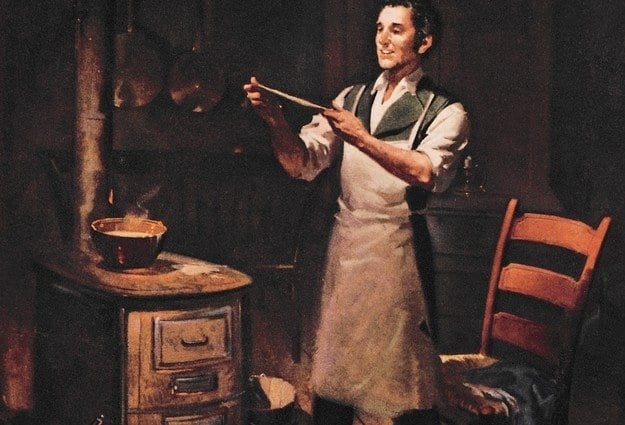
Test drive the discovery of Charles Goodyear and the failure of Henry Ford

Natural rubber remains the main ingredient in car tires to this day.
In the writings of South American discoverers such as Eranando Cortez, you can find stories of natives playing with resin balls, which they also used to coat their boats. Two hundred years later, a French scientist described a tree in the province of Esmeralda, which the locals called heve. If incisions are made in its bark, a white, milk-like juice will begin to flow out of them, which becomes hard and dark in air. It was this scientist who brought the first batches of this resin to Europe, which the Indians call ka-hu-chu (flowing tree). Initially, it was used only as a pencil erasing tool, but gradually acquired many other applications. However, the greatest discovery in this area belongs to the American Charles Goodyear, who spent a lot of money on various chemical experiments to process rubber. History has it that his greatest work, the discovery of a chemical process called vulcanization, happened by accident long before Dunlop began producing pneumatic tires. In the 30s, during Goodyear's laboratory experiments, a piece of rubber accidentally fell into a crucible of molten sulfur, giving off a strange, pungent odor. He decides to investigate it more deeply and discovers that its edges are burnt, but the core has become strong and resilient. After hundreds of experiments, Goodyear was able to determine the correct mixing ratio and temperature at which rubber can change its characteristics without melting or charring. Goodyear printed the fruits of his labor onto a sheet of rubber and wrapped it in another hard synthetic rubber. Gradually processed in this way rubber (or rubber, as we might call it, although this term is also used for the entire product) has widely entered the life of people, serving for the production of pacifiers, shoes, protective suits and so on. So the story goes back to Dunlop and Michelin, who view this tire as a substance for their products, and as we shall see, a good tire company will later be named after Goodyear. All eyes are on the Putumayo region, on the border between Brazil, Ecuador, Peru and Colombia. It was there that the Indians have long been extracting rubber from the Brazilian hevea or hevea brasiliensis, as it is called in scientific circles. Much of Brazilian rubber has been harvested in the village of Parao for over 50 years, and this is where Michelin, Metzeler, Dunlop, Goodyear and Firestone go to buy the magic substance in large quantities. As a result, it soon expanded, and a special railway line 400 km long was directed to it. Suddenly, the Portuguese colonial government was able to generate new income, and the production of rubber became a priority. However, the Hevea in this area are wild and grow erratically, spreading over extremely large areas. To grow them, the Brazilian authorities transported tens of thousands of Indians to lucrative areas, thus devastating entire settlements in Brazil.
From Brazil to the Far East
Small quantities of this indigenous vegetable rubber are sourced from the German-backed Belgian Congo. However, the real revolution in natural rubber mining is the work of the British, who will start cultivating mining on several large islands such as Borneo and Sumatra in the Far Asia-Pacific region.
It all started as a result of a secret operation by the royal government, which had long planned to plant rubber plants in the English and Dutch colonies in Southeast Asia, where the climate is similar to that of Brazil. An English botanist was sent to Brazil and, on the pretext of transporting orchids wrapped in moss and banana leaves, managed to export 70 hevea seeds. Soon 000 carefully planted seeds germinated in the palm house at Kew Gardens, and these seedlings were transported to Ceylon. Then the grown seedlings are planted in Southeast Asia, and thus the cultivation of natural rubber begins. To this day, the extraction in question is concentrated here - more than 3000% of natural rubber is produced in Southeast Asia - in Thailand, Malaysia and Indonesia. However, the heves are arranged in dense rows of cultivated land, and the extraction of rubber is much faster and more efficient than in Brazil. By 80, over 1909 million trees were growing in the area, and unlike the exploitative laborers in Brazil, rubber mining in Malaya is an example of entrepreneurship—companies are organized as joint-stock companies, listed on the London Stock Exchange, and investments have extremely high returns. In addition, harvesting can take place all year round, unlike in Brazil, where this is not possible during the six-month rainy season, and workers in Malaya live well and receive relatively good wages.
The business of extracting natural rubber is somewhat similar to the business of extracting oil: the market tends to increase consumption and responds to this by finding new fields or planting new plantations. However, they have a period to enter the regime, that is, they need at least 6-8 years to give the first harvest before they enter the market process and reduce prices. Unfortunately, synthetic rubber, which we will discuss below, is one of the few products of synthetic chemistry that cannot achieve some of the most valuable qualities of nature's original and leaves no alternative to it. To date, no one has created adequate substances to replace them 100%, and therefore the mixtures used to produce various tires consist of different proportions of natural and synthetic product. For this reason, humanity is completely dependent on plantations in Asia, which, in turn, are not invulnerable. Hevea is a fragile plant, and Brazilians still remember the times when all their plantations were destroyed by a special type of head - for this reason, today the country is no longer among the major producers. Attempts to grow other replacement crops in Europe and America have failed to date, not only for agricultural reasons, but also for purely technological reasons - tire factories are now set to work in accordance with the specifics of heavy ones. During World War II, Japan occupied hevea growing areas, forcing them to drastically reduce their use of cars, start a recycling campaign, and look for alternatives. Chemists manage to create a group of synthetic rubbers and make up for the deficit, but, as we have already said, no mixture can completely replace high-quality natural ones. Already in the XNUMXs, the program of intensive development of quality synthetic rubber in the United States was terminated, and the industry again became dependent on natural rubber.
Henry Ford's experiments
But let's not foresee events - back in the 20s of the last century, the Americans were obsessed with the desire to grow hevea on their own and did not want to remain dependent on the whims of the British and the Dutch. Industrialist Harvey Firestone unsuccessfully tried to grow rubber plants in Liberia at the instigation of Henry Ford, and Thomas Edison spent most of his fortune looking for other plants that could grow in North America. However, Henry Ford himself suffered the most in this area. In 1927, he financed a multi-million dollar project in Brazil called Fordland, where the Englishman Henry Wickman succeeded in pulling out the seeds of the hevea that gave rise to the Asian rubber industry. Ford built a whole city with streets and houses, factories, schools and churches. Huge areas of land are sown with millions of first-class seeds brought from the Dutch East Indies. In 1934, everything promised success to the project. And then the irreparable happens - the main thing is to mow the plants. Like a plague, in just one year it devastates all the plantations. Henry Ford did not give up and made a second attempt, on an even larger scale, to build an even bigger city and plant even more plants.
The result is the same, and the monopoly of the Far East as a large producer of natural rubber remains.
Then came World War II. The Japanese occupied the area and threatened the entire existence of the American rubber industry. The government is launching a massive recycling campaign, but the country is still facing a severe shortage of rubber products, including synthetic ones. America was saved by the ensuing exclusive national agreements and association over the idea of quickly creating a synthetic industry - by the end of the war, more than 85% of rubber production was of this origin. At the time, the program cost the US government a whopping $700 million and was one of the greatest engineering achievements of our time.
(to follow)
Text: Georgy Kolev
